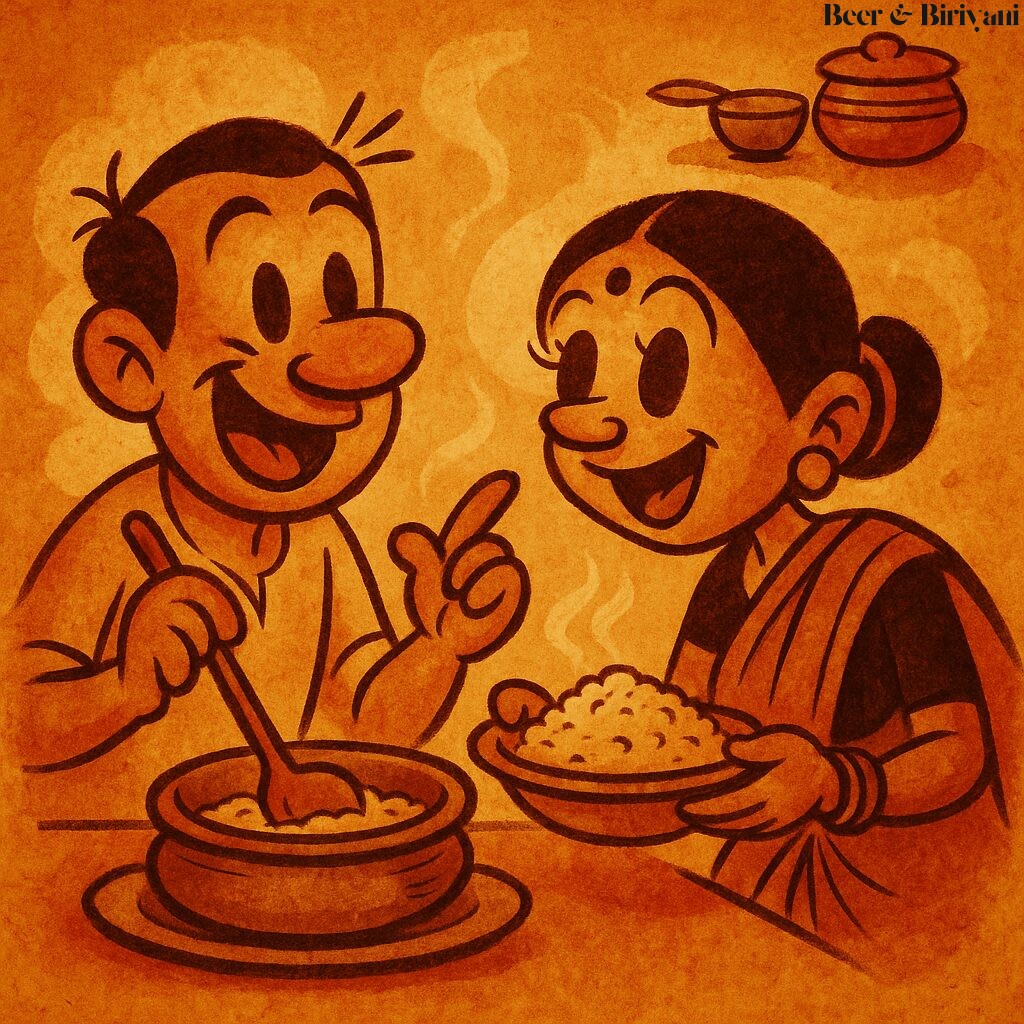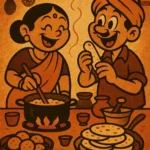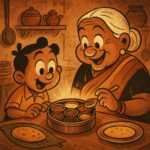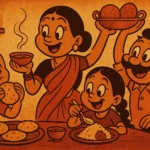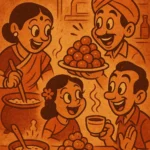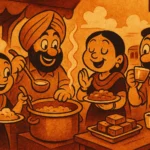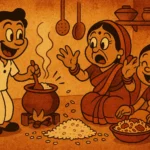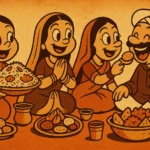Let’s talk about khichdi—the humble, comforting dish that has a unique place in every Indian home, particularly in the middle of the week. If you’ve never heard of it, khichdi is a simple dish made with rice and lentils, and it’s one of the first things we learn to cook. In my Mumbai childhood, it was the go-to meal when things were chaotic, when the rain kept us indoors, or when the stomach simply craved something soothing. It was like a warm hug in a bowl. And in my adult life, it’s no different. Here in Austin, Texas, on a particularly tired Wednesday night, khichdi is still my reminder to slow down and reset. But what makes this dish so special—and so essential in the flow of an ordinary week?
The Midweek Magic
In India, khichdi is more than just a meal; it’s a symbol of simplicity, a steady presence in the otherwise busy rhythms of life. And there’s something uniquely comforting about it that makes it perfect for midweek. Think about it: it’s the middle of the week, you’re halfway between the fatigue of Monday and the anticipation of Friday, and you just need something light yet fulfilling to get you through. This is where khichdi steps in, like an old friend you’ve known your whole life—reliable, familiar, and always there when you need it.
Khichdi is often categorized as comfort food, but in truth, it’s so much more than that. It’s a meal for all occasions—from sick days to celebrations, it serves as both a remedy and a celebration of warmth. Back in Mumbai, it was something my mom would prepare when I was feeling under the weather. But it wasn’t just about the food—it was about the act of making it. The gentle simmer of the lentils and rice, the comforting aroma of ghee melting in the pan, and the occasional hint of cumin, ginger, or asafoetida. It was always accompanied by a little prayer, a small ritual, a reminder that food was more than fuel—it was care. And honestly, there’s something so satisfying about eating something so wholesome, simple, and nourishing after a long day.
Why Wednesday?
You might wonder why I’m choosing to highlight khichdi as the quintessential “midweek” food. Well, in Indian kitchens, khichdi often lands in the middle of the week, not by accident, but because it’s one of those meals that slots perfectly into the busy calendar. For me, it’s a way of pressing pause before the weekend rush. In my Mumbai home, when the week was hectic, khichdi was always the simple yet fulfilling dish that felt like a moment of rest—a break from the noise, the deadlines, and the hustle of the earlier days. It’s light enough to not weigh you down but hearty enough to provide that deep, satiated feeling after a long day of work.
Here in Austin, things are no different. The middle of the week is often the busiest time for me, when the thrill of Monday’s momentum has worn off and the energy for the weekend feels too far away. So, I make khichdi—no fancy ingredients, just rice, lentils, and a little ghee. It’s my moment to reconnect with myself and with my roots. And in the quiet of that moment, it’s like the week shifts gears, even if just for a bit. It’s comforting to know that no matter where you are in the world, khichdi will always be there to help you breathe and move forward.
The Simplicity That Heals
Khichdi is the epitome of simplicity. It doesn’t require any fancy techniques or exotic ingredients. What it requires is time and patience, the same kind of patience you need in life when things get overwhelming. And in the world of quick meals, this is a reminder that slowing down can be good for you—especially when you need it the most. It doesn’t try to be anything else; it just exists, as it is. Its magic lies in its unpretentiousness and the way it makes you feel grounded. I often joke that it’s like a hug in a bowl, but it’s the truth. After a long day of errands, emails, and meetings, there’s something incredibly satisfying about sitting down with a bowl of khichdi, knowing that it’s been cooked with love, time, and care.
Adding Your Own Touch
One of the most beautiful things about khichdi is how adaptable it is. There are countless variations across India, depending on region, mood, and what’s available. In some parts, it’s made with vegetables like carrots and peas, making it a wholesome one-pot meal. In other places, it’s cooked with spices like turmeric, cumin, and ginger, adding an extra layer of warmth. Personally, I love to sprinkle some freshly roasted cumin and ghee over the top. The ghee adds a layer of richness, while the cumin gives it that earthy, toasty flavor that balances out the delicate simplicity of the rice and lentils. And of course, it’s always served with a dollop of yogurt or pickle on the side to balance the flavors.
But here’s the thing about khichdi: it’s not about getting it “right” or “fancy.” It’s about making it your own, adding the elements that resonate with you. The beauty of khichdi is that no matter how you make it, it will always be comforting. And that’s why it has such staying power as a dish. It transcends borders and generations, always adapting, always evolving, but always staying true to its roots as the quintessential comfort food.
A Tradition Worth Keeping
In a fast-paced world that’s obsessed with trends, khichdi is a reminder to slow down and savor the simple things. Whether you’re cooking it in Mumbai or Austin, it remains the same—an essential part of the rhythm of everyday life. As I sit down to eat my midweek khichdi, I’m reminded of how food can offer so much more than just sustenance. It offers connection, comfort, and continuity. It’s a tradition that I will keep alive in my own way, in my own kitchen, one bowl at a time.
So the next time you’re feeling the weight of the week, remember that sometimes the best thing you can do for yourself is to make a simple bowl of khichdi. It doesn’t promise to solve all your problems, but it sure does help you find a little peace amidst the chaos.
Disclaimer: If you’re still thinking about ordering takeout, don’t. Khichdi takes no time to make, and it’s the best thing you’ll eat all week. Plus, it’s good for the soul.
Born in Mumbai, now stir-frying feelings in Texas. Writes about food, memory, and the messy magic in between — mostly to stay hungry, sometimes just to stay sane.

